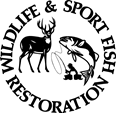Toledo Bend 2011 Survey Report  (PDF 363.7 KB)
(PDF 363.7 KB)
If you have difficulty accessing the information in this document, contact the TPWD Inland Fisheries Division for assistance.
Toledo Bend Reservoir - 2011 Survey Report
Prepared by Todd Driscoll and Dan Ashe
Inland Fisheries Division
District 3-D,
Brookeland, Texas
This is the authors' summary from a 37-page report. For a copy of the complete report, use the download link in the sidebar.
Fish populations in Toledo Bend Reservoir were surveyed in 2012 using electrofishing and gill netting. Anglers were surveyed from June to August 2011 and March to May 2012 with a creel survey. This report summarizes the results of the surveys and contains a management plan for Texas side of the reservoir.
Reservoir Description
Toledo Bend Reservoir is a 162,476-acre (71,000 acres in Texas) impoundment of the Sabine River in Newton, Sabine, and Shelby counties in southeast Texas. Although water level fluctuations average 5 feet annually, the historic low level was reached in 2011 (12 feet below conservation pool). Aquatic habitat consisted of aquatic vegetation (primarily hydrilla and American lotus) and standing timber.
Management History
Historically, the black bass fishery has been the most popular at Toledo Bend Reservoir. Typically, 65 to 80% of annual angling effort is directed at black bass. Approximately 10 to 20% of anglers target crappie. With the exception of 2006, TPWD has stocked Florida largemouth bass (FLMB) annually since 1990 to increase abundance of large bass (> 8 pounds). The Louisiana Department of Wildlife and Fisheries (LDWF) also stocks Florida largemouth bass annually. Joint efforts with LDWF have resulted in standardization of all recreational harvest regulations. In 1998, giant salvinia was discovered in Toledo Bend Reservoir. In 2008, plant coverage reached the historic high (4,091 acres) and impeded angler access. Cold winter water temperatures in 2010 and low water levels in 2011 reduced overall coverage to only trace amounts, but plants were scattered throughout the entire reservoir. Control methods have included annual herbicide treatments at access points, releases of salvinia weevils, and a water level drawdown.
Fish Community
- Prey species: Gizzard shad, threadfin shad, and bluegill were the most abundant prey species and provided ample forage for sport fish.
- Catfishes: Blue catfish abundance was high and stable compared to previous years, and high numbers of fish 12 to 30 inches were available to anglers. Channel catfish numbers were variable with a majority of fish < 12 inches. Angling catch rate averaged 4.0/h. Blue catfish and flathead catfish provided trophy opportunities for anglers.
- Temperate basses: Striped bass were present in the reservoir in low numbers. In 2012, white bass numbers increased. Few anglers target white bass in the reservoir, but during the spawning season (January – March) the fishery is popular in the Sabine River above the reservoir. A total of 4,544 white bass and yellow bass were harvested from the reservoir.
- Black basses: Spotted bass were present in low numbers. Largemouth bass abundance was relatively high; size structure and fish condition were good. The black bass fishery was most popular (67.3% of total fishing effort). Angling catch rate was high (1.2/h).
- Crappie: White crappie and black crappie were present in the reservoir. Angling catch (2.8/h) and total harvest (73,092 fish) reflected an abundant crappie population.
Management Strategies
- Stock FLMB annually to improve large fish abundance.
- Monitor largemouth bass population annually with electrofishing and biennially with creel surveys.
- Continue tournament-monitoring program and supplemental creel questions to monitor large fish abundance.
- Monitor giant salvinia coverage annually to monitor effects of control measures
- Publish monthly articles in the Lakecaster highlighting TPWD activities.

Performance Report as required by Federal Aid in Sport Fish Restoration Act Texas Federal Aid Project F-221-M-2 Statewide Freshwater Fisheries Monitoring and Management Program